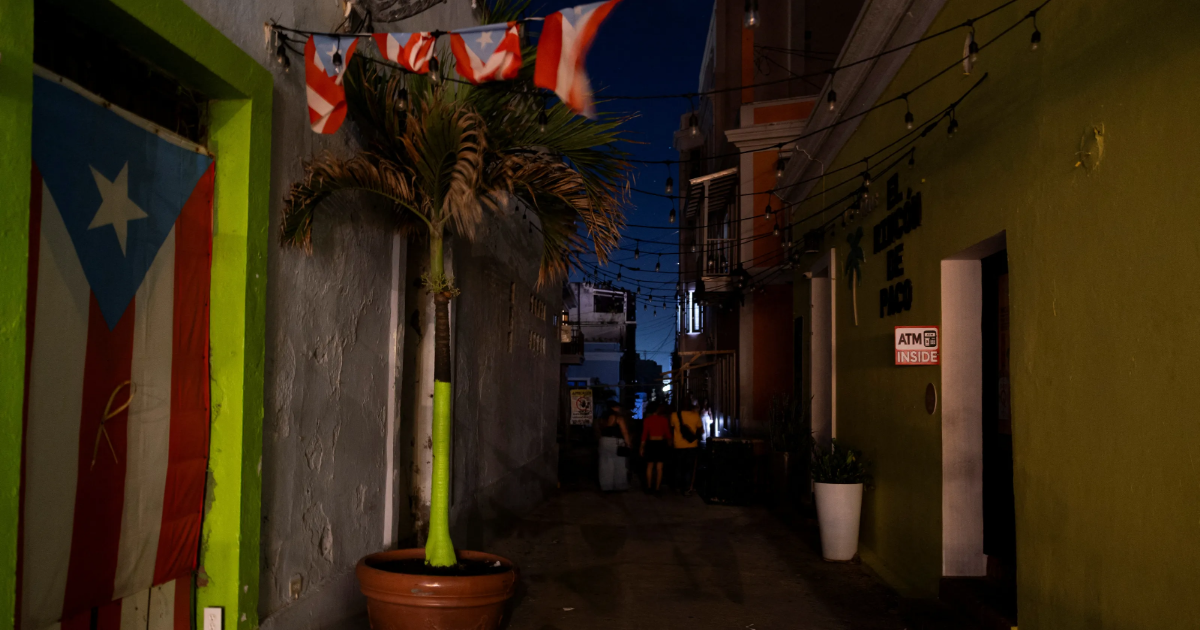- “The grid has become the poster child of the decay of the colonial system, its institutions and a very vulnerable population,” said Cecilio Ortiz García, of the University of Puerto Rico.
- Damage to the island’s power grid caused by Hurricane Maria persists years later. And in 2022, Hurricane Fiona once again plunged the island into darkness.
- For years, Puerto Rico has also faced a debt crisis which left the island unable to afford to maintain the grid, according to Laura Kuhl, of Northeastern University.
Crews are once again working to restore power in Puerto Rico after a massive blackout, the latest to the strike the island’s beleaguered power grid.
More than half of Puerto Ricans are still without power after a failure in the transmission of the electrical system sparked an islandwide blackout on April 16, an issue Gov. Jenniffer González-Colón called “unacceptable.”
The already fragile power grid has been repeatedly damaged by hurricanes, leading to regular rolling blackouts. About 1.2 million customers
spent New Year’s Eve without power
in a massive outage that took days to resolve.
And compounding crises driven by climate change, the COVID-19 pandemic and fiscal pressures have pushed the grid to the breaking point, Cecilio Ortiz García, co-founder of the University of Puerto Rico’s National Institute of Energy and Island Sustainability
“The grid has become the poster child of the decay of the colonial system, its institutions and a very vulnerable population,” Ortiz García said.
Hurricanes pummel the power grid
Hurricane Maria knocked out power to Puerto Rico, causing the largest blackout in U.S. history and second-largest in the world, according to the Rhodium Group, a policy analysis firm. It took nearly a year to completely restore restore power after the Category 4 storm slammed the island on Sept. 20, 2017.
Damage to the island’s power grid caused by Hurricane Maria persists years later. And in 2022, Hurricane Fiona once again plunged the island into darkness, causing a blackout that affected the entire U.S. territory of 3.2 million people.
“It is unacceptable that five years after hurricane Maria, nothing has fundamentally changed,” Agustín Carbó, the San Juan-based senior manager of energy transition at the Environmental Defense Fund,
“The current energy crisis is dire, and Puerto Ricans and the island’s economy are suffering.”
Additionally, a 6.4-magnitude earthquake rumbled across Puerto Rico in early 2020, knocking out power to virtually the entire island.
Former President Joe Biden approved billions of dollars in disaster funding for Puerto Rico and promised then Energy Secretary Jennifer Granholm would lead a “supercharged effort” to modernize Puerto Rico’s power grid.
Chronic underinvestment in infrastructure
For years, Puerto Rico has also faced a debt crisis which left the island unable to afford to maintain the grid, according to Laura Kuhl, a professor of public policy and urban affairs and international affairs at Northeastern University. The lack of maintenance combined with the centralized, top-down system make the grid particularly vulnerable to massive outages, Kuhl told Northeastern Global News in January.
Previously reported: 6 reasons why Puerto Rico slid into financial crisis
“In contrast, if Puerto Rico had, for example, a lot of renewable energy sources where the generation was more distributed, even individual outages wouldn’t have those widespread repercussions,” she said.
Power companies face protests, financial problems
The Puerto Rico Power Authority has also grappled with chronic financial problems. Facing $9 billion in debt, the troubled power company effectively filed for bankruptcy in summer 2017.
In 2020, the power authority signed a 15-year contract with LUMA Energy, a Canadian-American electricity consortium. The company pledged to reduce the frequency and length of power interruptions, but the outages persisted.
Puerto Ricans, including rapper Bad Bunny, have repeatedly protested against LUMA Energy and called on the governor to cancel LUMA’s contract.
The most recent blackout renewed these calls for the Puerto Rican government to cancel its contracts with Luma and Genera PR, the company that generates the power, according to the Associated Press. González-Colón, the governor, said the process of canceling the contract with Luma and finding possible replacements would be slow.
Contributing: Adrianna Rodriguez, Grace Hauck, Amanda Pé
r
ez Pintado, David Oliver and Jeanine Santucci, USA TODAY
